
- Все
- Детская и образовательная литература
- Детская художественная литература
- Современная детская литература
Бесплатный фрагмент - Astronomy in your pocket
Introduction
For many people, astronomy has either remained on the covers of textbooks, or is a distant part of physics that is reluctantly studied in high schools and institutes. For modern man, surrounded by all sorts of irritants and living at a furious pace of the metropolis, every day it becomes more difficult to find time for himself, for questions to himself.
From early childhood to old age, we always have only one driving force-the desire to learn the unknown. The form of knowledge changes with age, but the brain’s thirst for new information remains the same. In childhood, we learn the world in all possible ways, and any information is new and interesting, but as we grow up, we find it difficult to find quality food for our brain, despite the fact that the requests remain the same.
Many philosophers and thinkers called the science of the cosmos the science of the universe, which thousands of great minds have tried and will try to understand. Rulers and generals linked significant dates of events to a certain arrangement of stars and planets in space, perfectly understanding the meaning and consequences of their actions. And the study of such a science as astronomy has always been a rare opportunity, because knowledge about the cosmos and its structure has almost never been publicly available.
Like any science, astronomy has its discoverers, its main objects of study, and its controversial topics. But every science has its own boundaries, and the main difference between the science of astronomy and others is that these boundaries are the boundaries of the Universe, the widest in all senses of the word. Everything that has ever been and will be created by man is enclosed within the boundaries of our planet, Solar system, and Universe. No one can break and go beyond these boundaries, but to study their properties and features is the main task of astronomy. That is why many of the great minds of mankind were obsessed with the idea of understanding the primordial laws of the Universe.
The name “Astronomy in your pocket” was chosen for a reason, because this book is a collection of the most important information about the cosmos, stars, planets and their discoverers.
I. THE GREAT EXPLORERS
EGYPT
In Ancient Egypt, there was a complex mythology with many gods, and the astronomical ideas of the Egyptians were closely related to it. The Egyptian priests were the wisest astronomers of the time. Even then, the so-called schematic calendar was introduced, in which the year was divided into 12 months and contained 365 days, but the Egyptians knew that the true year is 6 hours longer. Egyptian priests had to perform night services to the God RA, so in order to determine the time not only during the day, but also at night, around 1500 BC, so-called star clocks were created based on the position of the stars in the night sky.
Of course, we can not say about the pyramid of Cheops, whose faces were oriented exactly to the cardinal directions, and the four corners of the pyramid pointed to the four signs of the zodiac: Taurus, Leo, Scorpio and Aquarius. The brightest stars in these constellations — Aldebaran, Regulus, Antares, and Fomalhaut — maintain the same distance from each other and are even now used as stable landmarks. It should be noted that the Egyptian astronomers could measure with great accuracy the distance between the stars and their position in space, because the location of the pyramids of Cheops, Chephren and mycerinus in the Giza pyramid complex coincides in all respects with the location of the stars Alnitak, Alnilam and mintaka in the constellation of Orion. The ancient Egyptians divided the sky into constellations, used the gnomon*, measured the height of the Sun above the horizon, knew six planets, and were even able to divide them into groups. It would seem that the Egyptians, a settled people, did not need astronomy, because the terms of agricultural work showed them the river Nile, yet it was on the Egyptian land in Alexandria that later worked Aristarchus of Samos, Eratosthenes, Timocharis, using the works of the priests, and the schematic calendar of the Egyptians used in their calculations Ptolemy and even Copernicus. We should also remember that one hour equal to 1/24 of the length of the day was offered to the world by the ancient Egyptians.

EUROPE
The oldest megalithic monument in Europe associated with astronomy is considered to be Newgrange in Ireland, near Dublin. The Newgrange dates from about 3000 BC and is a mound 13.5 meters high and 85 meters in diameter. A 19-meter tunnel leads to the burial chamber, which is based on vertically placed stone monoliths weighing from 20 to 40 tons. The walls of Newgrange are painted with strange different circles and spirals, symbolizing the rings of time. The tunnel is oriented to the Southeast-exactly where the sun rises on the day of the winter solstice. Unlike the much later Stonehenge (about 1750 BC), which is 82 megaliths weighing 5 tons each, 30 stone blocks (25 tons each) and 5 huge trilithons weighing 50 tons, the functions of Newgrange included only one astronomical operation: determining the beginning of the year, which its builders associated with December 21; while Stonehenge was an ancient astronomical Observatory, in which observations of the Sun, Moon and other planets were made. However, archaeologists and astronomers still have many questions about the technology of construction of such structures and their functionality.
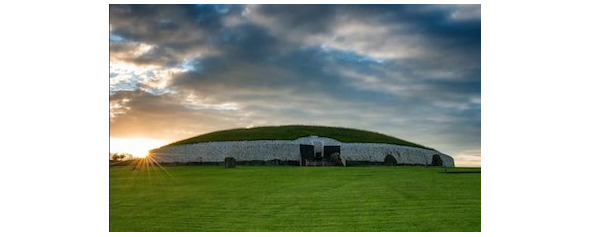
NEW WORLD
On the plains of North America, a huge number of archaeological sites have been found in the form of stone circles on the tops of hills. The oldest is the circle at Mahorville in Canada, which was built around 2500 BC.
Big horn, one of the most important astronomical monuments, is located in the state of Wyoming, USA. big horn is a large group of stones, from which come “rays” about 12 meters long, at the ends of which a stone circle is drawn. At the ends of each of the six rays are heaped stone piles, and the direction of the southwest pile of stones coincides with the direction of sunrise on the day of the summer solstice. On the big horn, it was also possible to observe and study the sunrises of Sirius, Rigel, and Aldebaran.
The “star” pyramids of Ecuador are also a part of history that is very interesting for both archaeologists and astronomers. Not far from the capital of Ecuador, Quito, there is a complex of 15 truncated pyramids of various heights and squares. The estimated date of construction is 700—1200 ad, but interestingly, all ramps approach the pyramids from the northeast and are inclined at an angle of 10°, and the largest reaches 300 meters in length. It was in this direction that you could see the rising of the star Alcayde, which is located at the end of the constellation URSA Major. This star rises last of the seven stars of the constellation, but the interest of the Injuns was really connected with the harvest, because, since Algina appears at an altitude of 10°, and its sunrise falls at the end of October, for the Injuns this event meant the onset of the rainy season and the beginning of the agricultural year. This season in the tropical zone comes suddenly, threatening to catch landowners by surprise, which is why the inhabitants of Ecuador were so important astronomical methods of warning the elements.
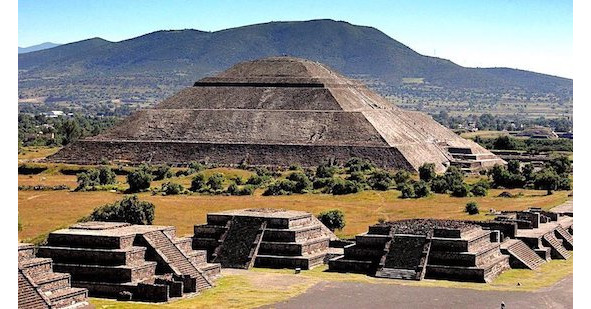
THE PRIESTS-MAYAN ASTRONOMERS
The ancient Mayan Injuns are considered to be the true intellectuals of pre-Columbian America. The Maya astronomer-priests spent their entire life observing from stone observatories-Caracoles (shells), knew five planets, and only from the priests were instructions about the beginning of agricultural work. About the economic direction of astronomical science, the Mayans say that they called the months: “harvest”, “deer” (hunting season), “cloud” (rainy season). Mayan priests even knew how to calculate solar and lunar eclipses, pretending that many natural phenomena are subject to them. Astronomy in their hands was an instrument of power that kept the people in fear and obedience. The Mayan calendar consisted of a 13-day week, a 20-day month, and a 365 — or 366-day year. Incredibly, it was the most accurate calendar in existence. An extra day in comparison with the true year would run up in it only after 10 thousand years. For comparison, the calendar of Caesar for 128 years gave an error per day, and even our modern — Gregorian-calendar for 3 thousand years gives an error per day.
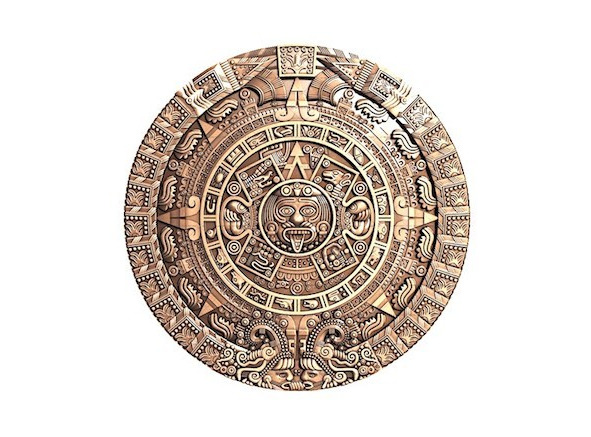
ANCIENT ASTRONOMY
Ancient astronomy is a very important page in the history of science, because in Ancient Greece for almost two centuries that the fundamental foundations of the universe and the structure of the Universe were laid. The mathematical methods of ancient astronomers were later used by both medieval Arabs and European astronomers.
Eudoxus was an outstanding scientist of the fourth century. He was one of the most prominent mathematicians of antiquity: he developed the General theory of proportions and became the forerunner of modern integral calculus. It is very likely that Eudoxus is responsible for the proofs given by Aristotle about the spherical shape of the Earth, and even Archimedes mentions the ratio of distances to the moon and Sun calculated by Eudoxus (1:12).
It is impossible not to say about Aristotle, whose authority in the middle Ages really held back the progress of astronomy. The theory that the Earth is the center of the Universe, to which all objects tend, was very popular and accepted as an unshakable truth. But at the same time, it is in combination with this theory that Aristotle, in his book “On the sky”, proved the spherical nature of the Earth, using as arguments eclipses of the moon and observations of the stars.
Another ancient scientist who made a huge contribution to science is Eratosthenes. For the first time, he measured the length of the earth’s circumference fairly accurately, using a homemade device called a scaphis. Eratosthenes concluded that the earth’s circumference is 39,690 kilometers. If we take into account the unreliability of the initial data and the roughness of the measuring instruments, Eratosthenes actually approached the figure of 40 thousand kilometers, equal to the circumference of the Earth.
Aristarchus of Samos, who lived in the third century BC, can rightly be called the Copernicus of the ancient world, because he was the first to propose and try to prove the heliocentric model of the Solar system. He found that the Moon revolves around the Earth, and the Earth, in addition to turning around its axis, also turns around the Sun, and this movement is characteristic of all planets. Aristarchus also stated for the first time that all the stars in the night sky are mobile, and only because of their distance do we think that they are stationary. The theory of Aristarchus could not be accepted by his contemporaries, too much would have to be changed. It was impossible for scientists to believe that the Earth was also a celestial body like Mars and Venus, because then the thousand-year-old idea of the Sky would have collapsed. Rejecting heliocentrism, the scientist’s contemporaries accused him of blasphemy and banished him from Alexandria. Almost five centuries later, Ptolemy will find arguments that refute the movement of the Earth. It will take several epochs for heliocentrism to be accepted by humans.
NICOLAUS COPERNICUS

Nicholas Copernicus can rightly be considered the man who stopped the Sun and moved the Earth, because he was the first in Europe to formulate and scientifically justify the heliocentric system of the world.
Orphaned early, Copernicus was educated in Italy. While studying at the University, Nicolaus Copernicus showed excellent results in mathematics and theology, but it was then that he became particularly interested in astronomy. After receiving a doctorate in Canon law, Copernicus returned to his native Poland at the age of 30. Copernicus made all his notes in Latin or German — there is not a single paper known that he made in Polish. Copernicus had a perfect command of the ancient Greek language. Moreover, the first translation of a text from ancient Greek into Polish was made by him.
The first works of Copernicus, revealing the mechanics of the celestial bodies, were freely distributed and even admired in Church circles, but as soon as the Church realized that his work “undermines the foundations”, the books were banned. The main statements in the Copernicus heliocentric system were as follows: the celestial spheres and orbits do not have a common center, as Aristotle claimed; the center of the Earth is only the center of mass and the center of the moon’s orbit, not the center of the Universe; the distance between the Earth and the fixed stars is much greater than the distance between the Earth and the Sun, and all the planets move in orbits centered on the Sun. These statements completely contradicted the prevailing idea of the structure of the universe at that time, according to which the Central position in the Universe is occupied by a stationary Earth, around which the Sun, Moon, planets and stars rotate. In 1616 under Pope Paul V, the Catholic Church officially banned the Copernican theory and the protection of the heliocentric system of the world, since this interpretation contradicts the Scriptures, although the heliocentric model was still allowed to be used for mathematical calculations of the movement of the planets. Copernicus was also one of the first to Express the idea of universal gravitation.
Contrary to popular belief, no one burned Nicholas Copernicus at the stake. He lived a long life, and died at home at the age of 70. The grave of the great scientist was discovered only in 2008, the authenticity of his remains was confirmed by a DNA test.
ASTRONOMY OF THE EAST
The Arabs, having conquered the Arabian Peninsula, formed in the VIII — X century a powerful state — the Arab Caliphate. As early as the seventh century, the treasures of ancient science fell into the hands of the Arabs, but these manuscripts were fully translated and used only by the eighth and ninth centuries. Despite this, Arab scholars wrote many encyclopedic works and essays. In 1417—1420, the grandson of the famous Central Asian conqueror Tamerlane, Ulugbek built the most famous Observatory in the Middle and near East. Working at this Observatory, Arab scientists together with Ulugbek achieved significant results by determining and measuring the Equatorial and horizontal coordinates of the stars, the tilt of the Ecliptic to the equator, the position of the spring equinox, and stellar coordinates; a special table was created to calculate lunar eclipses.
JOHANN KEPLER
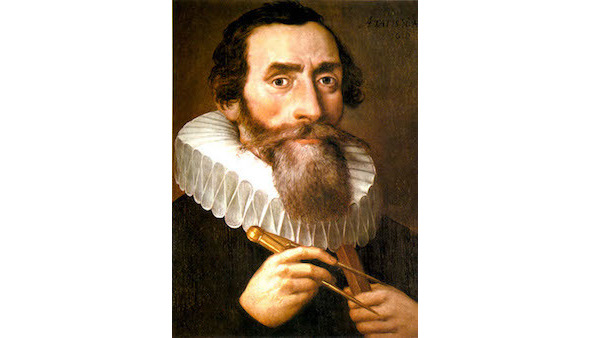
Johann Kepler was born in the German state of Stuttgart on December 27, 1571 in a poor Protestant family. At the age of six in 1577 Kepler first saw a comet, the same comet was observed and described by the Danish astronomer Tycho Brahe. In 1589 Kepler graduated from the school at the Maulbronn monastery, and for his outstanding abilities in almost all Sciences, the city authorities awarded him a scholarship to help him further his studies, but Johann was very sickly, ailments followed him all his life.
At the end of the XVI century in many cities of Europe, there was an open confrontation between groups of people who had different ideas about the structure of the Universe. And in 1600, both exiles — Kepler and Brahe — met in Prague, but it soon became clear that the way Kepler represented astronomy, Tycho Brahe shared only partially. To preserve the already relatively outdated model of the universe, according to which the Central position in the Universe is occupied by the stationary Earth, Brahe proposed a compromise model: all the planets, except the Earth, rotate around the Sun, and the Sun rotates around the stationary Earth (geo-heliocentric system of the world).
The three laws of planetary motion formed by Kepler gave answers to many questions related to the shape of the orbit and the speed of the planets.
Kepler’s first law (the law of ellipses): “Every planet’s orbit is an ellipse with the Sun at a focus.”
Kepler’s second law (law of squares): “Each planet moves in a plane passing through the center of the Sun, and for equal periods of time, the radius vector connecting the Sun and the planet covers equal areas.” In simple words, the Sun is not in the center of the ellipse that the planets move along, so the closer the planet is to the sun, the faster it moves in its orbit. For example, the speed of the Earth as it orbits the Sun changes every six months by about 4,000 km/h.
Kepler’s third law (harmonic law): “The Squares of the periods of the planets’ rotation around the Sun are referred to as cubes of the large semi-axes of the planets’ orbits”. In other words, when a planet approaches the Sun, the radius (half — axis) of its orbit decreases, but the speed, and therefore the time of movement (period) — increases.
Only in 1609, with great agony, Kepler managed to publish his works, in which the scientist explained not only the new astronomy and physics of the sky, but also for the first time found out what is the cause of ocean tides. Kepler absolutely proved that the Moon is the cause of tides. It was also Kepler who introduced the term “inertia” into physics as the innate property of bodies to resist an applied external force, forming in a clear form the first law of mechanics: “Any body that is not affected by other bodies is at rest or performs a uniform rectilinear motion.”
The works of Johannes Kepler on optical phenomena can be considered the beginning of optics as a science. In his works, he outlined geometric and physiological optics, described the General theory of lenses, light refraction, refraction, and the concept of an optical image. Kepler also discovered the role of the human lens for the first time, describing the causes of myopia and farsightedness, and an in-depth study of optical laws led Kepler to the scheme of a telescopic telescope (Kepler telescope).
Craters on the moon and Mars, a supernova, an orbiting Observatory, and a spacecraft were named in memory of the great scientist.
GALILEO GALILEI
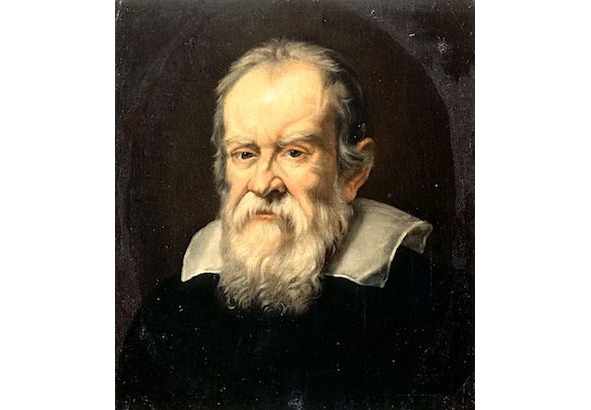
Galileo was born in 1564 in Pisa and belonged to a ruined Florentine family. From an early age, the boy was attracted to art; all his life he was interested in music and drawing — he mastered them perfectly. In 1581, 17-year-old Galileo, at the insistence of his father, entered the University of Pisa to study medicine, but was passionately interested in geometry, and in 1592, Galileo received a place at the prestigious and rich University of Padua, where he taught astronomy, mechanics and mathematics. After learning about the invention of the telescope in Holland, Galileo decided to build his own telescope. In 1609. he assembled the first telescope and pointed it at the sky. Soon he was able to build a telescope that gives a magnification of 32 times. It is also important to note that the term “telescope” was introduced into science by Galileo. Using the telescope, which became the main instrument of all astronomers, Galileo Galilei saw the surface of the moon and discovered mountains and craters on the moon, and the milky Way broke up into separate clusters of stars. But even more surprisingly, Galileo was able to see as many as four moons of Jupiter. In Florence, Galileo continued his scientific research, discovering the phases of Venus, spots on the Sun, and then the rotation of the Sun around its axis.
Galileo was a very versatile man, who invented hydraulic scales, studied probability theory, created a prototype microscope with which he studied insects; also worked on the theory of color and magnetism, the resistance of materials, optics and acoustics. He was the first to experimentally measure the density of air. Galileo was a gifted writer and philosopher, and he was certainly the founder of both experimental and theoretical physics, and even Einstein called Galileo “the father of modern science”. He can be considered one of the founders of mechanism, because it is the analysis of mechanical movement that underlies his work. This scientific approach considers the Universe as a large mechanism, and complex natural processes as combinations of the simplest causes, the main of which is mechanical movement.
As you know, Galileo studied inertia and free fall, and in his last book formulated the laws of fall: “The speed increases in proportion to time, and the path increases in proportion to the square of time.” This contradicted the famous statements of Aristotle that the speed of falling is greater the greater the weight of the body. However, with the Catholic Church, things did not go so smoothly for Galileo. The fact is that the absolute majority of his works contained a variety of different statements and hypotheses that completely contradicted Aristotle, namely, the works of Aristotle built the medieval worldview. Seeing the obvious refutations of the geocentric system of the world and its fallacy, he decides to fight for the truth with the Catholic Church. His books violated the prohibition on promoting the “Pythagorean” doctrine, and Galileo was faced with a choice: either he would repent and renounce his “errors”, or he would suffer the fate of Giordano Bruno. Galileo confirmed that he agreed to recite the required recantation, and then was sentenced to prison. He spent the rest of his life under house arrest and the constant supervision of inquisitors. Galileo Galilei died on January 8, 1642, at the age of 78, in his bed. Pope Urban forbade the burial of Galileo in the family crypt in Florence. The greatest scientist of the middle Ages was buried without honors, and the head of the Catholic Church also did not allow to erect a monument. Officially, the Vatican rehabilitated Galileo Galilei only in 1992.
Among the most famous students of Galileo are Torricelli, who became a physicist and inventor, Castelli, the Creator of hydrometry, and Borelli, the founder of biomechanics. Craters, satellites, asteroids, and a NASA space probe were named in memory of the great scientist of the middle Ages.
ISAAC NEWTON
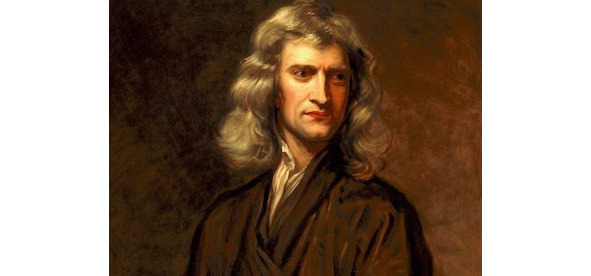
On Christmas night, 1642, a weak and quiet baby was born in the village of Woolsthorpe, named Isaac. Relatives did not baptize the baby at first, because they were afraid that the premature baby would not recover. Isaac’s mother was a widow, and he grew up without friends, and did not participate in noisy games that required skill and physical strength. Even as a child, he built a kind of water clock that measured time so accurately that soon the whole family began to use it. In 1655, 12-year-old Newton was sent to study at a nearby school in Grantham, where he lived in the house of an Apothecary. From the first lessons, the boy showed outstanding abilities. Isaac preferred all other pursuits to writing poetry, reading books, and constructing various mechanisms. In his youth, Isaac passionately devoted himself to writing poetry. After completing his education at school, Newton was able to continue his education at the University of Cambridge. More than 30 years of Newton’s life are associated with this educational institution. The basics of many Sciences were given to Newton without much difficulty, but despite the discoveries of Galileo, natural science and philosophy, Cambridge still taught according to Aristotle. After passing the exams, Isaac received a scholarship, but according to the memoirs of a roommate, Newton completely devoted himself to learning and science, forgetting food and sleep, and probably this is the way of life the young scientist desired for himself. By the age of 23, Isaac Newton was already considered a brilliant mathematician who made a number of discoveries.
In 1664, the plague began in England, and Isaac went to Woolsthorpe, taking with him all the tools and medicines. For three years, according to official data, about 30 thousand people died in London alone. But Isaac was able to find profit in this solitude, and in two plague years Newton made three of his major discoveries: the law of universal gravitation, an explanation of the nature of light, and methods of differential and integral calculus.
We can not help but say, perhaps, about the most famous Apple that fell next to the great scientist, prompting him to study the laws of falling. All his life, Newton was inspired by the great minds of the past — Descartes, Galileo and Kepler, and many of his works are based on their work. Conducting optical experiments, Newton built a mixed telescope-reflector, which in addition to its large size gave a 40-fold magnification. Rumors of the new instrument reached London, and after demonstrating his invention to the king, Newton became famous and in January 1672 was elected a fellow of the Royal society. Later, it was with an improved model of the Newtonian telescope that other galaxies, the planet Uranus, and redshifts were discovered. By 1687, Newton’s main work was published — “Mathematical principles of natural philosophy”, in which he summed up all his works, forming the law of universal gravitation, which described the gravitational interaction, and the three laws of motion.
The law of universal gravitation States that the force of gravitational attraction F between two immaterial points with masses m1 and m2 separated by a distance r acts along the line connecting them, is proportional to both masses and inversely proportional to the square of the distance.
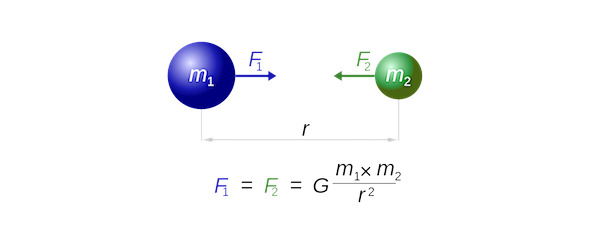
Three laws of motion:
Newton’s first law: “Every body continues to be held in its state of rest or uniform and rectilinear motion, until and insofar as it is not forced by applied forces to change this state.”
Newton’s second law: “In an inertial frame of reference, the speed of change in the momentum of a material point is equal to the resultant of all external forces applied to it.”
Newton’s third law: “Action always has an equal and opposite reaction, otherwise — the interaction of two bodies on each other are equal and directed in opposite directions.”
These laws helped answer the question about the hypothetical acceleration of The earth’s satellite. Newton knew that the acceleration of the moon in orbit is 0.27 m/s2, and the degree of its orbit is 60 times the radius of the Earth. According to his calculations, the acceleration of a low satellite, that is, all objects on Earth, should exceed the acceleration of the moon by 602 = 3600 times. Using the law of gravity, Newton multiplied 0.27 by 3600 and obtained the famous acceleration of gravity g, equal to 9.8 m/s2.
In 1689 Newton was first elected to Parliament, and again in 1701. Isaac performed his parliamentary duties with the same conscientiousness with which he handled all matters. Written by Newton in 1704, the book “Optics”, in which he described the seven colors of the rainbow as the main colors of the spectrum, became the basis of this field of physics for the next hundred years. For his contribution to the development of science, the English Queen made Newton a knight. Isaac Newton was a very versatile man — in addition to physics, astronomy, and mathematics, he studied alchemy, theology, optical phenomena, and the theory of the ether (a hypothetical all-pervading medium). It was Newton who came up with the idea of making the edges of coins ribbed so that fraudsters could not cut off pieces of metal from them. Despite poor health in childhood, Isaac Newton lived for a full 84 years, dying in 1727, he was not married and left no descendants, but his students and followers made great discoveries in many areas of science.
PIERRE SIMON LAPLACE
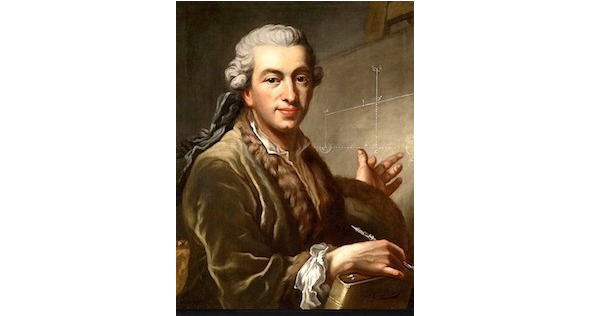
For his many achievements in astronomy, physics, and mathematics, Laplace was nicknamed the French Newton. Pierre Simon Laplace was born in 1749 in the family of a farmer in Normandy. In 1765, Laplace entered the University of Caen. The first work of Laplace was associated with the theory of gambling. In the autumn of 1770, having given up his career as a priest and decided to devote himself to science, Laplace came to Paris. In 1773, he was admitted to the Paris Academy of Sciences, and in the same year his fundamental work was published — “On the principle of universal gravitation and on the age-old inequalities of the planets that depend on it”. Laplace was one of the first to openly declare that there should be no God in science, even if you believe in him. Because of the beginning of revolutionary unrest in France, Laplace was forced to flee Paris. In the small town of Melun near Paris, Pierre Simon wrote a book “Exposition of the system of the world”, in which he collected all the astronomical knowledge of the XVIII century, without using a single formula. But the main thing — in this book, Laplace presented his hypothesis of the origin of the Solar system. He suggested that the Solar system was born out of a hot gas nebula that surrounded the young Sun. As it cooled, the nebula began to shrink, and due to the rapid rotation, the centrifugal forces became comparable to gravity, and the nebula flattened, becoming a disk that began to break into rings. The matter in each ring began to thicken, becoming a protoplanet. This theory has existed for more than 100 years, but had a number of significant drawbacks. Also in his book, Pierre Simon came to the conclusion that there are bodies in the Universe with such a huge mass that even light can not leave them. Such bodies are now called black holes. Despite the armed coups in France, Laplace continued to work hard, becoming a member of most of the European academies, and in 1808, he became a member of the French Academy of Sciences. Napoleon, as Emperor, gave Laplace the title of count of the Empire. After the fall of Napoleon and the restoration of the Bourbon dynasty, Laplace received the title of Marquis, became a peer of France, and was awarded the highest order of the Legion of Honor. In 1827, Laplace fell ill and died at the age of 77. His last words were: “What we know is so insignificant compared to what we don’t know.”
WILLIAM HERSCHEL

In observational astronomy, William Herschel can be called Columbus, because he was the first with his telescope to go beyond our galaxy, expanding the Solar system and “moving” the Sun. William was born in 1738 in Germany in the family of a musician of the Hanoverian guard. From the age of 15, he played in the same orchestra on the violin, organ and oboe, the latter of which is the most complex instrument. In 1757, when the seven Years’ war began, the Anglo-Prussian army was defeated at the battle of Hastenbeck, and Herschel fled to England, for which he was accused of desertion. Herschel changed his name to English and quickly learned English. His musical interest led him to mathematics, which led him to optics, and optics to astronomy. From the age of 35 to the end of his life, he devoted himself entirely to astronomy. His observations of cosmic double stars and numerous works laid the Foundation for the modern theory of double stars. In 1781 William Herschel discovered a new planet in the Solar system — Uranus, for which he received the Copley medal, which is considered the oldest and most prestigious award of the Royal society of London, and in 1782 was awarded the Copley medal. He was given the title of astronomer by the king.
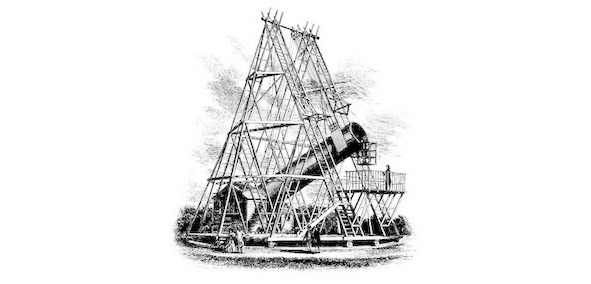
Having assembled dozens of advanced telescopes, the largest of which is a 12-meter focal length telescope, Herschel studied deep space objects, discovering more than 2,400 such objects, known as nebulae. In addition to Uranus, Herschel discovered four other objects in the Solar system: in 1789, two moons of Saturn, Mimas and Enceladus, and in 1787, two moons of Uranus, Titania and Oberon. Herschel was the first to express the idea of the evolution of cosmic matter under the influence of gravitational forces. For almost 40 years, he observed sunspots and recorded their number, shape, and size. Herschel also hypothesized that the milky Way has the shape of a disk, and the Solar system is part of it. Later, the incredible fact was established that in addition to the movement of all the planets around the Sun, the Sun itself moves around the center of our galaxy at a speed of about 200—220 km/sec. In 1800, studying solar filters, Herschel discovered infrared radiation, the use of which later became the Foundation in medicine related to tissues, in pasteurization of products, protection of premises and night vision devices. The great scientist died in 1822, having lived 83 years, and on his tombstone it is written: “Broke the bolts of Heaven.”
CAMILLE NICOLAS FLAMMARION
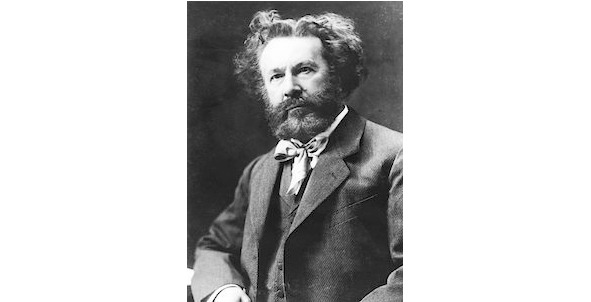
When we study great scientists, we first look at their discoveries and achievements, and how we can take advantage of them. Camille Flammarion was the founder of the French astronomical society, and his most important scientific achievements are related to the observation of double and multiple stars, as well as the study of Mars. He wrote the famous book “the planet Mars and its habitat”, which contains all known observations and which is still used by many scientists, and also studied the earth’s atmosphere, climate and volcanoes.
Camille Flammarion was born on February 26, 1842 in a poor family in the small town of Montigny-Le-Roi in France. When the family moved to Paris in 1853, Camille became a gravel apprentice, gaining drawing skills. Despite the fact that Flammarion did not receive a higher education, from the age of 16 he already worked as a cruncher at the Paris Observatory. For 60 years, Camille Flammarion compiled and regularly published monthly maps of the sky showing the location of the planets, and held monthly scientific conferences and meetings. Major works of Flammarion have gone through dozens of editions, sold hundreds of thousands of copies, have been translated into absolutely all European languages and brought the author a great reputation. The great French scientist died in 1925 at the age of 84, and in memory of the contribution he made, craters on the moon and on Mars, many asteroids and an entire Observatory were named after him.
ALBERT EINSTEIN

Albert Einstein — one of the greatest thinkers of all time, it is with his name associated with the completion of the formation of classical physics, which began Newton and Galileo. Despite the fact that Einstein had visited many of the world’s largest observatories, his “tool” was not astronomical tubes, but theoretical thinking. The ideas that Einstein gave to science freed it from outdated philosophical doctrines and beliefs.
Albert Einstein was born on March 14, 1879 in the Bavarian city of Ulm. As a child, the future genius of Einstein did not manifest itself in any way, albert was a reserved and quiet boy who was only able to repeat short phrases by the age of seven. When, at the age of 12, albert read a random book on geometry, he realized the beauty of mathematics. Albert inherited his musical ability from his mother, and his logical thinking came from his father. At school, Einstein openly expressed dissatisfaction with the system in which he studied and which raised an obedient “herd animal”. His homeroom teacher said that albert should leave school because his mere presence in the classroom completely undermines respect for teachers. In 1895, at the age of 16, Albert left the gymnasium. He tried to enter the Polytechnic school in Zurich, known for its high level of teaching, but because of the failure in the exams in history and foreign languages, Аlbert had to re-pass the exams, and in 1896 he entered the Polytechnic, determined to become a teacher of physics. As a student, Einstein did not forget about music, because it was in the classical masterpieces of great musicians that he saw the harmony that he was looking for when building his theories. In 1900 Einstein passed the exam to receive a diploma of teacher of physics, but the work received only two years later. 1905 was the most successful year for Einstein, because he managed to publish five articles that were masterpieces of scientific thought. His hypotheses about light quanta-elementary particles of electromagnetic radiation allowed to explain the appearance of current when a substance is illuminated by short-wave radiation. Despite the fact that this effect was discovered in 1886, it did not fit into the framework of wave theory. It was for this work that Einstein received the Nobel prize, and this work marked the beginning of a new quantum era in the development of physics.
The famous theory of relativity, which revolutionized the concept of space and time, was proposed by Einstein in 1915. The outbreak of war in Europe did not interrupt the scientific work of the scientist, and in 1916 he published “Fundamentals of General relativity”.
There are two theories of relativity:
1) Special relativity theory (SRT) — considers physical processes in uniformly moving objects.
2) General relativity theory (GRT) — describes accelerating objects and explains the origin of such phenomena as gravity and the existence of particles of gravitons.
The SRT is based on the principle of relativity, according to which all the laws of nature are the same for both stationary and moving at a constant speed of bodies. And from this seemingly simple thought, it follows that the speed of light, equal to approximately 300,000 m/s in a vacuum, is the same for all bodies.
An incredible fact, which will put almost any physicist next questions is that if we take a space ship that can fly with great speed, and on the bow install a laser gun capable of firing photons, the relative vehicle such particles are travelling at the speed of light, but relative to a stationary observer they would seem to fly faster as cumulative vehicle speed and light. But it doesn’t really happen! An outsider sees photons traveling at 300,000 m/s, as if the speed of the spacecraft was not added to them. From this it follows that at a speed that tends to the speed of light, some other coordinate must change. It turns out that the time coordinate changes as the speed increases, and time slows down for an object that is moving, and the higher the speed, the more noticeable the effect. For example, there is a well-known twin paradox, which describes a situation when one of the twins remained on Earth, and the other left on a spaceship at a speed close to the speed of light. In the 100 years that the twin has lived on Earth, only 163 days have passed on the spacecraft, and the twin who flew back to Earth will find his brother in a deep old age.
According to GRT, the stronger the gravity, the slower time passes. This fact has been repeatedly tested on the most accurate atomic clocks and is necessarily taken into account when working with satellites and GPS systems, because the gravitational forces in orbit are much less than near the Earth. If this is not taken into account, then in a day the coordinate error will be 10 kilometers. Another important consequence of GRT is the fact that light rays can bend when they pass near massive bodies. And when a body reaches such a huge mass that it turns into a black hole, in addition to the fact that even light cannot escape from the black hole, time almost stops there.
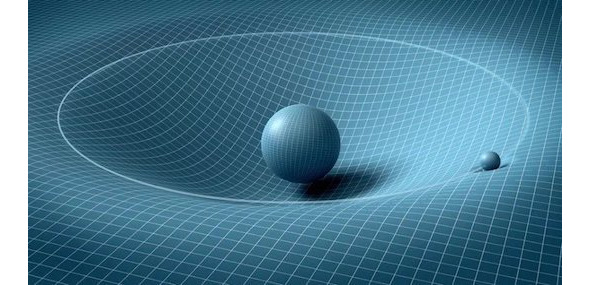
Einstein’s hypotheses and beliefs really shocked the entire scientific community at the beginning of the XX century. Article “Does the inertia of a body Depend on its energy content?” put an end to the creation of a relativistic (from the Latin relativus — relative) theory. Here, for the first time, the connection between mass and energy was proved in the form of the famous formula E = MC2. Einstein said that the mass of a body is nothing more than a measure of the energy it contains. This discovery went beyond all known limits of physics and philosophy, because atomic energy is really a mass that has turned into energy.
In 1932 Einstein went to the United States, and it turned out to be the final farewell to his homeland, because in January 1933, Hitler came to power. The Nazis planned to expel the Jew Einstein from the Prussian Academy of Sciences, where he was one of the most famous scientists, but Einstein himself withdrew from the Academy, renouncing German citizenship. While living and working in the United States, Albert Einstein was alarmed by the discovery of uranium fission, and in his letter to US President Roosevelt, drew attention to the real possibility of creating nuclear weapons. However, when atomic bombs were dropped on the Japanese cities of Hiroshima and Nagasaki, Einstein openly strongly condemned the American government.
Einstein is the author of hundreds of books and articles on physics, astronomy, and philosophy. During his scientific career, he was an honorary doctor of about 20 leading universities in the world, a member of many Academies of Sciences, including an honorary member of the USSR Academy of Sciences. In 1952 Einstein was asked to become President of Israel, but he respectfully declined to answer, citing his inexperience in this matter. Albert Einstein died at the age of 77 in Princeton on April 18, 1955, and his last work was an unfinished proclamation calling for the prevention of nuclear war. Posthumously, albert Einstein also received a number of distinctions. In 1999, Time magazine named Einstein the personality of the century, and in 1992, the great scientist was named number ten in Michael Hart’s list of the most influential personalities in history. There are also monuments to Einstein posthumously in the United States and in Jerusalem. A chemical element, a unit of measurement in physics, a crater on the moon, an asteroid, a quasar, an astronomical Observatory, an Institute in Germany, and several prestigious scientific awards are named in honor of this outstanding scientist of the XX century. Without this great scientist, the progress in science that humanity has achieved would hardly have been possible.
EDWIN POWELL HUBBLE
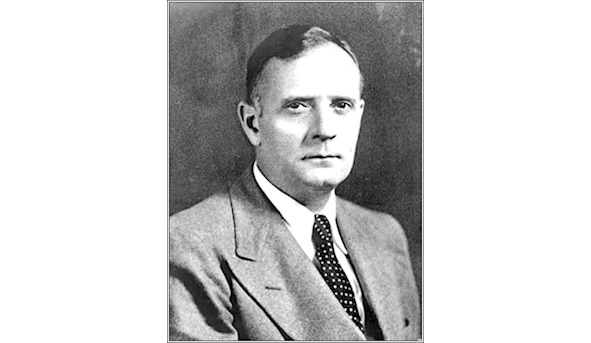
Edwin Hubble was born in 1889 in Missouri in the family of an insurer. In school, he was well developed both physically and intellectually. After entering the University of Chicago, Hubble began to study astronomy, physics, and mathematics in depth. After receiving his bachelor’s degree, Edwin studied for three more years at king’s College in the United Kingdom. And from 1919 Hubble worked in the state of California until his death. At that time, it was still believed that the Universe consisted of a single galaxy, the milky Way. Using the largest telescope in the world at that time (2.5 meters), Edwin Hubble found out that there are spiral nebulae that are definitely not part of the Milky Way, as they are too far away, and are separate galaxies. By presenting his findings in print, Hubble changed the scientific view of the Universe. Subsequently, he arranged all the galaxies into groups, the classification of which is known today as the Hubble sequence. All the galaxies were divided into three large groups: spiral, elliptical, and irregular (irregular).
Бесплатный фрагмент закончился.
Купите книгу, чтобы продолжить чтение.